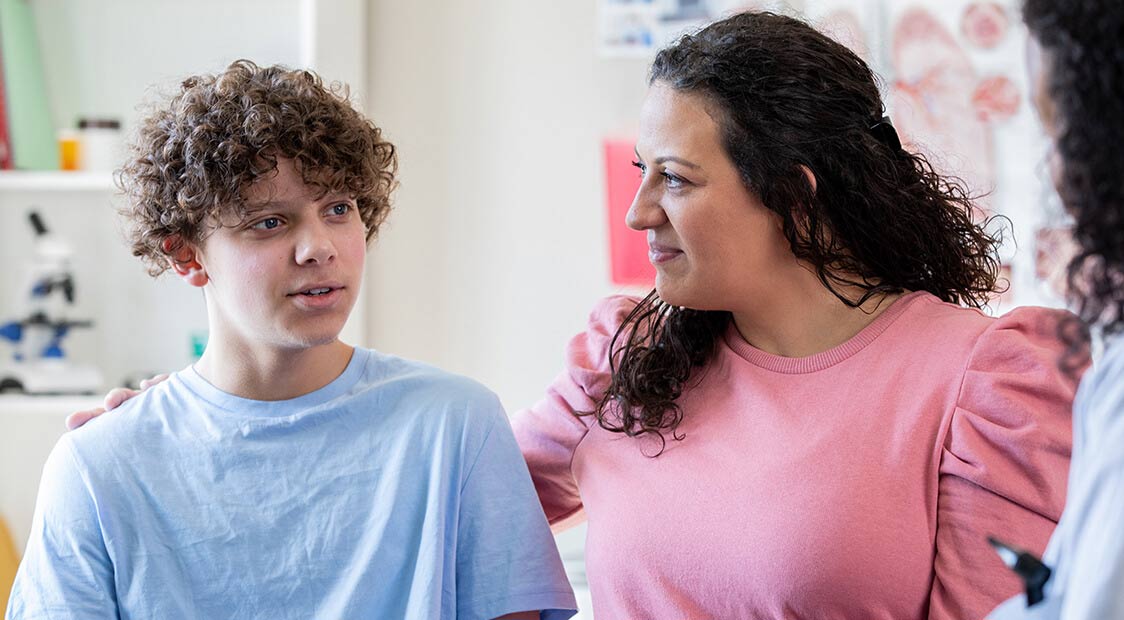Understanding a cancer research article
By Rianna Vazquez and Megan Prior
Share:

Knowledge is power. For many patients who have received a cancer diagnosis, information and knowledge are an essential tool to help ease anxieties and answer newfound questions about their condition. As we go about our day, we are bombarded on many sides with news, text, articles and other forms of media with an abundant amount of information.
Although helpful, that influx of information can be overwhelming to sort through to find the hidden gem we need to gain insight into a health topic. One gem to look for is called research articles. Articles can derive from many databases, have multiple authors and are filled with data. Because of the high volume of articles published daily, we must develop the skillsets to determine credible sources and understand a research paper's complex concepts.
Research Articles
Research articles are divided into sections to assist with the organization and flow of one concept to another: abstract, introduction, methods, conclusion and references. For example, an article published from the UF Health Proton Therapy Institute coauthored by Dr. Raymond Mailhot, “Disparities in pediatric cancer survivorship care: A systematic review,”1 is broken into several sections. The sections are introduction, methods, results, discussion and conclusion (Mobley et al., 2023).
Before reading the article, there is a section called the abstract. The above article's abstract is broken into five sections: background, methods, results, conclusions and keywords (Mobley et al., 2023). The abstract should be the first text you read when analyzing a research article with cancer information or another topic. The abstract gives a brief synopsis or summary of the information contained in the article to save time for the reader to discern if it includes information on their topic of interest like cancer research.
Once you have chosen an article to continue reading, it is important to skim through it first to evaluate its trustworthiness. We will cover the following questions to test an article’s credibility:
- What makes an article high-quality?
- What does a peer-reviewed source mean and is my article peer-reviewed?
- What are the author’s credentials? What makes them qualified to discuss the topic of interest?
- When was the article published?
- Are there signs that the article is not high-quality?
Once we have established that the source is credible, we will decipher the text. This entails taking the time to understand key terms, rereading, following up with cited sources, annotating and reflecting.
Finding High-Quality Research Articles
A high-quality research article stands out because of its solid method, credible sources and expert authors. One fundamental way to tell if an article is reliable is whether it’s been peer-reviewed. This means other experts have reviewed the research before publication to check for accuracy and validity.
Peer-reviewed articles are more trustworthy and can be found in reputable databases like PubMed, Google Scholar and JSTOR. Fun fact: Physicians and physicists at the UF Health Proton Therapy Institute have contributed to nearly 2,000 peer-reviewed publications.
Another critical factor is the author’s credentials. Research written by experts affiliated with respected academic institutions or professional organizations are generally credible. Many articles related to cancer studies will come from a high-volume cancer center. If other studies cite the article, it’s a good sign that the research is well-regarded in the scientific community. When reading a cancer research or other medical article, ensure it clearly explains how the study was conducted, includes references from reliable sources and presents well-supported conclusions.
Be cautious of articles with vague methods, unsupported claims or overly emotional or sensational language, as these may indicate bias or lack of objectivity. Also, look for conflicts of interest, such as funding from organizations that could influence the results.
Lastly, check the publication date. Research can become outdated quickly, especially in fields like medicine, cancer studies or technology. Ensure the article reflects current knowledge; if it’s older, see if more recent studies still cite it. In short, for a high-quality research article, look for peer-reviewed, credible authors, solid methods, clear references and up-to-date information.
A great example of a credible, high-quality research article is an article coauthored by the UF Health Proton Therapy Institute's radiation oncologists, Dr. Raymond Mailhot, Dr. Nancy Mendenhall and Dr. Julie Bradley. When reading the article “Measuring early changes in heart function due to radiation treatment in breast cancer patients,”2 you can see that the research is recent (2023), peer-reviewed, has clear methodologies and is written by experts in the radiation oncology field. While the references include older articles, they are still being cited by recent studies such as this one.
How to Decipher the Information
After ensuring that the research article is peer-reviewed, the author is credible and the article is relevant, it is time to decipher the information. When faced with a research article, a reader can feel overwhelmed or that understanding the medical terminology or cancer information is daunting. However, with the steps provided, deciphering a research article will reward you with newfound knowledge.
To further understand a research article, you must skim through the text. Skimming through the text determines if the article is credible and assists with reviewing the paper to pick out unfamiliar words or concepts. Noting the words or ideas you did not understand in a separate area, or on the article itself, can help you become familiar with the text.
Take the time to define the words that made you pause, and in the reference section, review the sources the author utilizes to help further your knowledge. You can also use the keywords the authors may have provided in the abstract to help you understand the article. You can further your annotation skills after defining terms and reviewing unfamiliar concepts.
Annotating is a way to familiarize yourself with the text. With each paragraph you have finished, note what you understood from the information, questions you may have and conclusions you have drawn based on that specific section. Doing this, along with your previous notes, can assist you in your next read-through of the article.
Reread the article and take your time to reflect on the information provided. After rereading the information, it is time to evaluate and reflect on what you gained from the article. In terms of evaluation, apply what you have learned to yourself and utilize the conclusion section of the article to compare what you have learned or understood.
Understandably, specific topics, possibly those about cancer research, may still be confusing, or you may find that one credible source challenges the other on the topic of treatments or developments within the cancer treatment community. That said, it is important to note any questions you may have and discuss them with a trusted provider or someone who specializes in cancer studies.
Gaining Knowledge is Empowering
In conclusion, gaining knowledge is empowering, especially after a cancer diagnosis. With the constant flow of information in today’s world, developing the skills to identify credible sources is crucial.
Evaluating medical research articles requires an understanding of key factors, such as peer-review status, the credibility of authors, publication date and the presence of precise methods and reliable references. Once you confirm that a source is trustworthy, take the time to read and understand the material by decoding key terms, following up with citations and annotating sections to reinforce your understanding.
Furthermore, if you have questions about the information you learned or would like to share what you have learned, speak with a trusted provider or someone who is an expert in cancer research. This careful approach ensures you gain valuable insights from high-quality research articles, helping you make informed decisions.
If you want to learn more about the UF Health Proton Therapy Institute and their exciting developments within the research community, please visit the Research Portfolio page.
1 Mobley EM, Moke DJ, Milam J, Ochoa-Dominguez CY, Stal J, Mitchell H, Aminzadeh N, Bolshakova M, Mailhot Vega RB, Dinalo J, Motala A, Hempel S. Disparities in pediatric cancer survivorship care: A systematic review. Cancer Med. 2023 Sep;12(17):18281–18305. doi: 10.1002/cam4.6426. Epub 2023 Aug 8. PMID: 37551113; PMCID: PMC10524017. https://www.ncbi.nlm.nih.gov/pmc/articles/PMC10524017/
2 O'Dell WG, Siva Kumar S, Klassen CL, et al. (2023, November 24). Measuring early changes in heart function due to radiation treatment in breast cancer patients. American Heart Journal Plus: Cardiology Research and Practice. https://www.sciencedirect.com/science/article/pii/S2666602223001027?via%3Dihub


